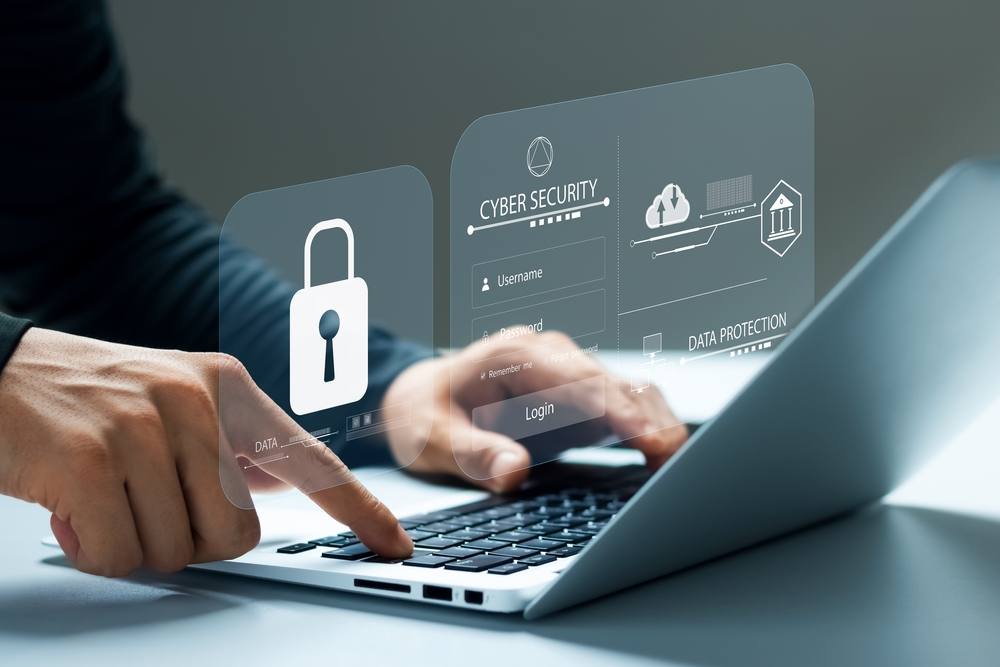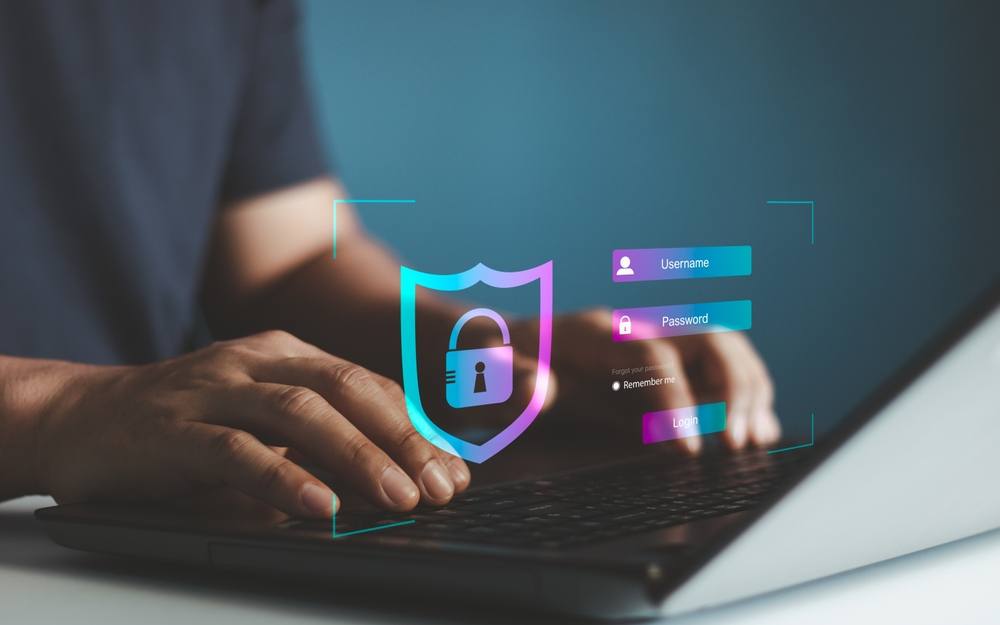Cybersecurity Risks for Overseas Firms with UK Offices and How to Prevent Them

Overseas IT managers who are responsible for the cybersecurity risk management of your firm’s UK offices must feel exasperated at times. The UK, and London especially, is the third most targeted nation, facing over 100 million cyberattacks per quarter.
The onslaught of cyber threats you are challenged to defend is relentless. And the challenges are becoming increasingly complex.
We don’t know one single IT manager or consultant managing cybersecurity risks these days who says, “In case we face a cyber threat.” Everyone says, “For when…!”
To avoid disruption, you need resilience. We all know that. The question is, what does your business need — and how can you ensure your defences are secure with the budget you can spend?
The constant pressure of balancing global connectivity with local compliance whilst safeguarding complex, cross-border systems can weigh heavily on your shoulders.
We get it. Having worked with multiple IT managers overseas, we understand how exhausted you feel. That’s why the firms we work with chose to reach out for our managed IT services.
Not only do we specialise in cybersecurity and building complex IT infrastructure, our award-winning 24/7 IT Support helpdesk can do the grunt work whilst you enjoy your well-deserved personal downtime.
By combining bespoke cybersecurity services designed for your firm, ISO 27001-certified IT partners, GDPR compliance IT support, and strategic consulting for scaleups, IT managers can have more peace of mind knowing fragmented global infrastructures are being integrated into secure digital ecosystems.
The Q&A below covers most base points you need to know. If you still have any questions you need answering, don’t hesitate to call one of our senior IT strategists for a consultation.
What are the most likely cybersecurity risks international companies with offices in the UK face?
A large proportion of data breaches occur because of inconsistent security standards. Threat actors targeting UK firms favour phishing attacks targeting remote teams (hybrid offices are a popular choice), exploiting supply chain vulnerabilities, and breaking through weak access controls using a “brute force” technique.

What types of cyberattacks are most common for overseas firms operating in the UK?
- Phishing and social engineering
- Ransomware attacks via unpatched systems
- Credential theft from unsecured remote access
- Insider threats due to procedural confusion
- Supply chain compromise
What compliance frameworks should overseas firms with UK offices align with?
At a minimum:
- GDPR / UK Data Protection Act
- Cyber Essentials or Cyber Essentials Plus
- ISO 27001
You may also want to consider Cyber Essentials for baseline cybersecurity controls.
How can IT leaders bridge the gap between global and local cybersecurity practices?
The short and easy solution is to localise security governance.
Many global IT teams enforce centralised controls that fail to meet UK-specific obligations like GDPR. Partnering with local IT support in Surrey & London helps align these frameworks while maintaining speed and compliance.
How can overseas firms assess their cybersecurity posture?
A comprehensive audit should include:
Vulnerability scanning
This proactive measure identifies weaknesses within a company’s digital infrastructure so attackers cannot exploit them. By systematically scanning networks, servers, applications, and devices, IT teams can detect outdated software, misconfigurations, or unpatched systems that pose security risks.
Regular vulnerability scans are essential for maintaining compliance with frameworks such as ISO 27001 and Cyber Essentials. They provide visibility into security gaps and prioritise remediation efforts.
Not only that, but vulnerability scanning helps maintain consistent cybersecurity standards across multiple locations, ensuring no regional system becomes a weak link.
Automated tools can run frequent scans, but expert analysis is critical to interpret results and implement effective fixes. When integrated into a broader cybersecurity strategy, vulnerability scanning strengthens defences, reduces exposure to threats, and demonstrates a commitment to robust data protection and regulatory compliance.
Data flow mapping
Data flow mapping enhances cybersecurity defences by visually tracking how data moves through an organisation — where it’s collected, stored, processed, and shared.
This clarity helps IT teams identify vulnerable points where sensitive information could be exposed or breached.
Understanding every stage of data handling helps IT managers implement stronger access controls, encryption, and monitoring — creating a more resilient, transparent, and compliant cybersecurity posture.
Compliance gap analysis
By systematically assessing existing controls against required benchmarks, IT teams can pinpoint vulnerabilities, procedural weaknesses, and overlooked risks.
It can often be the case for overseas firms with UK offices to operate under policies, processes, or systems that fall short of regulatory or industry standards in the UK, such as ISO 27001, Cyber Essentials, or GDPR.
Compliance gap analysis ensures consistent adherence to both local and international regulations. The strategy provides a clear roadmap for remediation, helping organisations prioritise actions, allocate resources efficiently, and maintain an ongoing, proactive cybersecurity posture.
Incident response testing
Incident response testing helps IT teams prepare for real-world cyber threats by simulating breaches, system failures, or data compromises. These exercises evaluate the effectiveness of existing protocols, identify gaps in communication between global and local IT teams.
For UK operations, testing ensures compliance with GDPR and other regulations by validating that sensitive data is protected and breach notification procedures are followed.
Regular testing builds organisational resilience, reduces downtime, and strengthens employee awareness, enabling firms to respond confidently to incidents while minimising financial, operational, and reputational damage across borders.
A certified ISO 27001 IT support provider in London can perform this assessment and prepare firms for formal certification.
How often should we conduct vulnerability assessments, penetration testing, and incident response drills?
We recommend conducting vulnerability assessments at least quarterly, or after major system updates.
Penetration testing is recommended annually, or more frequently for high-risk systems, simulating real-world attacks to evaluate defences.
Incident response drills should occur biannually, ensuring teams can react swiftly to breaches and maintain business continuity.
Frequent testing not only uncovers technical vulnerabilities but also evaluates staff readiness, coordination, and procedural effectiveness, creating a proactive, resilient security posture across global operations.
How does GDPR complicate cybersecurity for overseas operations?
GDPR complicates cybersecurity for overseas operations because it imposes strict rules on the collection, processing, storage, and transfer of personal data belonging to EU and UK residents.
Although GDPR is a European law, it’s powers are far-reaching. Global in fact. The purpose of these data regulations is to protect the rights of consumers in Europe and the UK.
That means, if you have any clients from Europe or UK, your business is required to be GDPR compliant.
Firms must ensure that customer data is legally compliant, secure, and auditable. This includes implementing encryption, pseudonymisation, access controls, and robust breach detection mechanisms.
Cross-border data transfers require additional safeguards, such as Standard Contractual Clauses or approved adequacy decisions, to avoid fines. Non-compliance can result in penalties up to £17 million or 2% or 4% of global turnover.
For IT managers, this means integrating GDPR-compliant IT controls with global systems, training staff on local obligations, and continuously monitoring both technical and procedural safeguards to prevent data exposure.

What role does IT strategy play in long-term cyber resilience?
We’ve always maintained that IT strategy is central to building long-term cyber resilience. That opinion has not changed.
Every technological strategy you implement has to anticipate future threats. Cybercriminals consistently upgrade their tactics, so IT teams need to stay one step ahead.
Cybersecurity measures cannot be reactive. They have to be proactive and scalable. IT strategy identifies critical assets, prioritises risk mitigation, and integrates policies, procedures, and defensive technologies (i.e endpoint detection, cloud security, and biometric MFA)
IT strategy should include a solid disaster recovery plan, incident response, and ongoing cybersecurity training for your employees.
By embedding cybersecurity into the broader IT roadmap, strategy transforms security from a cost or afterthought into a core business enabler, protecting reputation, operations, and long-term profitability.
One of the biggest risks to your business suffering a data breach, if not the biggest, is your staff.
Effective cybersecurity relies on cyber-aware staff!
We recommend providing your entire cybersecurity workshops for your entire workforce at least once a year, and regular updates of any new developments in your cybersecurity defence strategy.
Remember, cybercriminals are upgrading their strategies all the time, so your employees need to be aware of them.
Continuous assessment, feedback, and refresher courses maintain high compliance levels, fostering a security-conscious culture that supports consistent, cross-border cybersecurity standards and reduces the risk of breaches or regulatory penalties.
Cybersecurity workshops and continuous training should include:
- e-learning modules
- strong passwords
- How cyberattacks occur
- phishing simulations that reinforce awareness of emerging threats
- best and safe practices that avoid a data breach
- role-based training that ensures employees understand their specific responsibilities, from handling sensitive data to reporting incidents
- dangers of remote working
What technologies are essential for protecting UK offices?
- Zero Trust Architecture
- Endpoint Detection & Response (EDR)
- Cloud Access Security Brokers (CASB)
- Multi-Factor Authentication (MFA)
- Data Loss Prevention (DLP)
- 24/7 monitoring
How can overseas IT managers secure executive buy-in for cybersecurity investment?
One of the stumbling blocks we have learned from speaking with other IT managers overseas is in the boardroom. How can you convince executives that investing in cybersecurity
Reframe cybersecurity as a business enabler, not a technical cost.
Highlight:
Financial exposure
A BBC report indicates the average cost of a data breach is £8,26
Calculate your expected business downtime and recovery costs in worst-case and best-case scenarios
Regulatory fines
GDPR fines up to £17.5 million or 4% of global turnover
Brand damage
Legal and reputational damage is more difficult to overcome than fines and downtime. When customers leave, they don’t come back. In the UK, the media reports significant data breaches.
Not only that, but under the protocols of GDPR, companies are obligated to report data breaches to their customers, partners and stakeholders.
How can overseas firms future-proof cybersecurity as threats evolve?
Future-proofing cybersecurity requires a strategic, multi-layered approach that anticipates evolving threats rather than merely reacting to incidents. For overseas firms with UK offices, this involves several key actions:
Continuous Risk Assessment and Threat Intelligence
Regularly monitor global and regional threat landscapes to identify emerging attack vectors, such as ransomware variants, AI-powered phishing, or supply chain vulnerabilities. Integrating threat intelligence feeds allows IT teams to prioritise protections based on the most relevant risks
Adaptive Security Architecture
Implement scalable and flexible frameworks, including Zero Trust Architecture, endpoint detection and response (EDR), and secure cloud adoption. Ensure security protocols can adapt as new technologies or business processes are introduced across offices.
Co-Managed and Local IT Expertise
Collaborate with co-managed cybersecurity support for internal IT teams or local UK specialists to bridge knowledge gaps, enforce consistent security policies, and respond rapidly to threats.
Employee Awareness and Training
Cyber threats often exploit human error. Regular training and simulations help staff recognise phishing, social engineering, and insider threats, keeping the human element resilient.
Incident Response Testing and Contingency Planning
Conduct frequent simulated breaches and tabletop exercises to validate response plans. This ensures that global teams act swiftly, mitigating impact and reducing downtime.
Strategic IT Roadmap Integration
Integrate cybersecurity planning into broader IT strategy and digital transformation initiatives, ensuring security scales alongside business growth.
Why partner with local IT experts when you already have global governance?
Even with exceptional global IT governance, local IT experts provide essential context-specific knowledge that ensures compliance and security at the regional level.
Trust us, you don’t want to be reading GDPR and ISO-compliance literature. The material is so dry it makes your eyes crack!
The cybersecurity team at MicroPro have already had their replacement eye implants and can help you to understand and implement strategies that work for you.
Our cybersecurity strategies are always customised, but they all focus on the key areas:
- Future-proof IT infrastructure
- Rapidly respond to incidents
- Implement security patches
- Tailor policies to local infrastructure and best employee practices
- Provide you with 24/7 access to IT support personnel
Final Thoughts
Protecting business data is not just the responsibility of the IT team. Every employee, from junior staff to executives, plays a crucial role.
An effective cybersecurity strategy combines robust technical safeguards, knowledge of local compliance obligations and employee awareness.
For more information about working with managed IT services in London, contact us today and speak with one of our experts about managing your cybersecurity risks.



